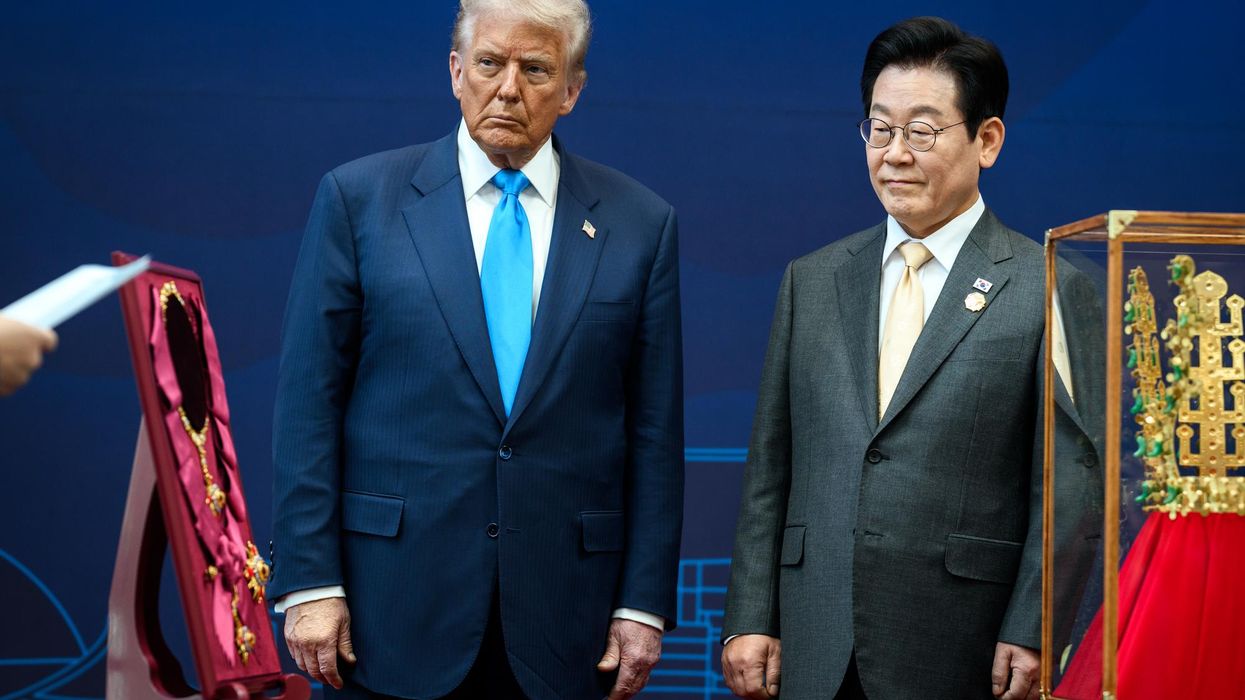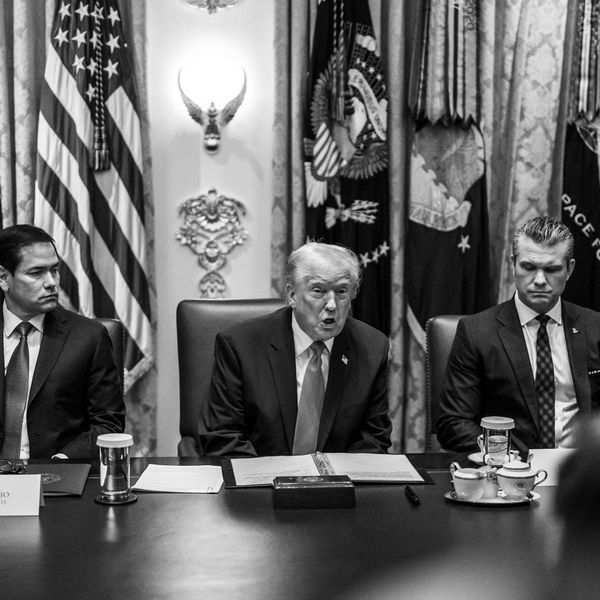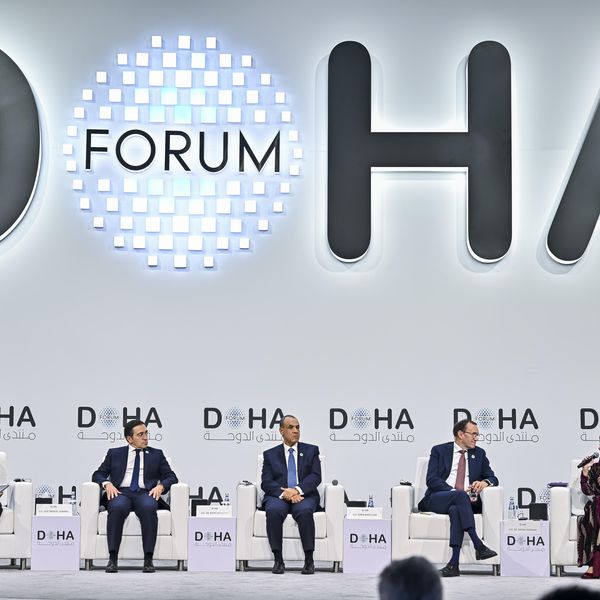Tensions over Iran’s nuclear program escalated after the International Atomic Energy Agency passed a resolution last week censuring Tehran for failing to cooperate with a years-long investigation into nuclear activities from Tehran’s pre-2003 nuclear weapons program.
While Iran’s retaliation for the censure puts a ticking clock on efforts to restore the 2015 nuclear deal, known as the Joint Comprehensive Plan of Action, the resolution sent a necessary signal to Iran that there are consequences for stonewalling IAEA inquires and failing to meet legally binding safeguards requirements — even if the nuclear activities under investigation took place two decades ago.
That the Board had to act, however, should also send a message to the United States and its European partners about the imperative of restoring the JCPOA, which effectively and verifiably blocks Iran’s pathways to nuclear weapons. It is past time the Biden administration acted with greater urgency and returned to the drawing board to find a creative solution to bridge the remaining gap on an agreement to restore the accord.
The resolution, which was passed by a vote of 30-2 — Russia and China voted against while India, Pakistan, and Libya abstained — was a relatively mild rebuke, considering Iran stonewalled agency inquires over the past several years and the strength of the IAEA’s evidence that Iran did not meet its obligations to declare nuclear materials and activities to the IAEA. The resolution raised concern about Iran’s “systematic insufficient cooperation” and called upon Tehran to act on an “urgent basis” to “resolve all outstanding safeguards issues.”
In the weeks leading up to the Board’s vote the necessity of a resolution was clear — particularly after the IAEA noted in May 30 report that Iran has still not provided technically credible explanations for the presence of uranium at three locations that were never declared as part of Tehran’s nuclear program. According to the report, Iran has also alleged that the locations could have been contaminated by a third party as an act of sabotage — an explanation that strains credulity. The IAEA also concluded that Tehran undertook activities related to uranium metal at a fourth location that should have been declared to the agency under Iran’s safeguards agreement, which is legally binding under the Nuclear Nonproliferation Treaty, or NPT.
While no one expects Iran to admit to its past weapons program, it is not surprising that the IAEA was unsatisfied by these answers and frustrated by Iran’s obfuscation, particularly after an agreement between Tehran and the agency in March to try and close the investigation by the June Board meeting. The resolution was a necessary act to support the IAEA and nonproliferation norms writ large.
The IAEA’s report makes clear that these activities took place prior to 2004, when Iran had an organized nuclear weapons development program, so they do not pose an immediate proliferation risk. But it is precisely because Iran had a nuclear weapons program, lied about it, and continues to obfuscate when pressed about activities from that period that the JCPOA is necessary. This resolution should serve as a critical reminder to the Biden administration about what is at stake if efforts to restore the JCPOA fail — Iran will be closer to a bomb than ever before with minimal monitoring that may not detect a dash to build one.
Iran’s stockpile of uranium enriched to 60 percent has now reached a level where Tehran could enrich material to weapons grade in less than 10 days. That timeframe is dangerously close to the point where Iran could try to produce enough nuclear material for a bomb between IAEA inspections and then divert it to a covert facility for weaponization. Building the bomb could take another 1-2 years, but it would be more difficult to detect where those activities were taking place and disrupt them.
The JCPOA provides the most effective, rapid path to rolling back the proliferation risk posed by Iran’s nuclear activities and putting its program back under a microscope. The multilayered verification regime in the JCPOA monitors every aspect of Iran’s nuclear program and provides the highest possible assurance that any move toward a nuclear weapon in the future will be quickly detected, providing the international community with time to respond — time that it does not have now.
Without the JCPOA, Iran will only be legally obligated to implement a safeguards agreement, which is required by the NPT. While this provides IAEA inspector access to sites where nuclear materials are present, history has demonstrated that it is inadequate to effectively guard against proliferation. Even if there is no evidence that Iran is engaged in illicit nuclear activities, Tehran’s past illicit activities, its failure to cooperate with the IAEA, and the bare minimum of monitoring will drive speculation about a covert program.
The United States would also have more options to support any future IAEA investigations and prevent Iran from stalling as a party to the JCPOA. In order to prevent Iran from stonewalling agency requests to investigate evidence of undeclared nuclear materials and activities, the JCPOA allows the Joint Commission, the body set up by the accord to oversee its implementation, to require Tehran to cooperate with the IAEA within a timebound period if the agency is not satisfied with the access provided by Iran.
This vote requires only a majority, so as a JCPOA member, the United States and its European partners in the accord could have used this mechanism to prevent Iran from dragging out the agency’s investigation. Having it available in the future as part of a restored JCPOA would be an important tool in ensuring timely investigation of any evidence pointing to illicit nuclear activities. Without the JCPOA, history could repeat itself by allowing Iran to drag out any future investigation.
For months the Biden administration has failed to approach negotiations over the JCPOA with an urgency commensurate to the threat posed by Iran’s growing nuclear program. Biden’s national security adviser Jake Sullivan essentially put the onus on Iran saying recently that “there is a deal on the table” for a compliance for compliance return to the JCPOA that does not include extraneous issues and if Iran does not take it “that’s on them.” Waiting around for Iran, however, is only likely to kill the prospects for restoring the JCPOA. It would be a failure of U.S. leadership to sit back and leave the ball in Iran’s court, particularly given that the United States ignited this crisis when former President Donald Trump withdrew from the JCPOA and reimposed sanctions on Iran — despite Iran’s compliance.
Hopefully, the IAEA Board’s recent resolution will serve as a powerful reminder of why a nuclear deal with Iran is so critical for global nonproliferation efforts and U.S. national security, and light a fire under the administration to return to the drawing board to find a way to close a deal to restore the JCPOA. To allow Iran’s nuclear program to inch closer toward a bomb than ever before while a single, albeit complicated and politically charged, non-nuclear issue, holds up closing an agreement to restore the accord is inexcusable.
















